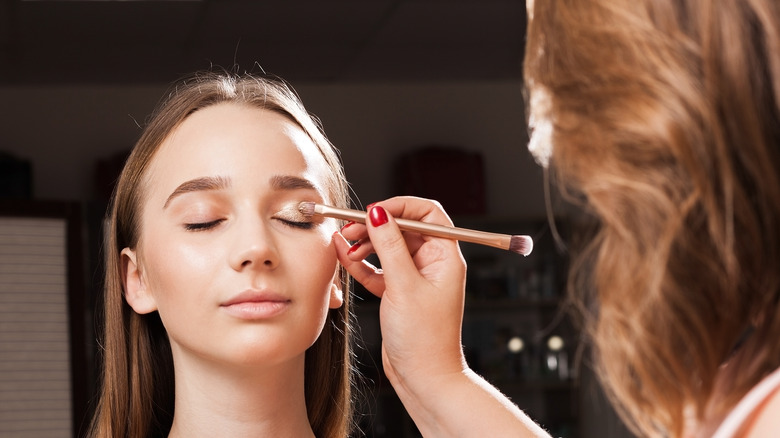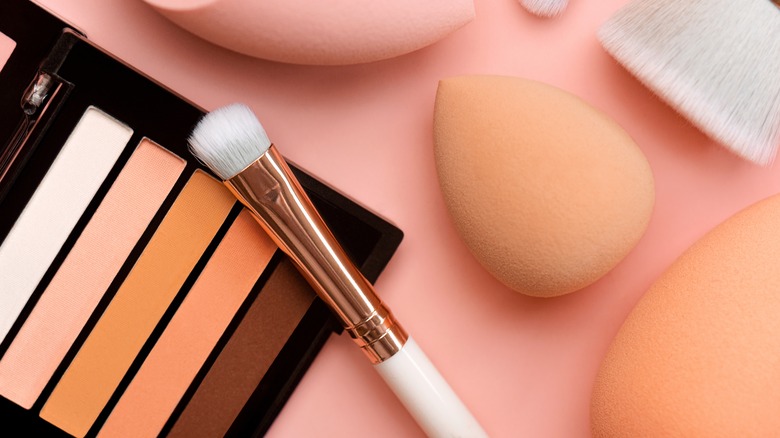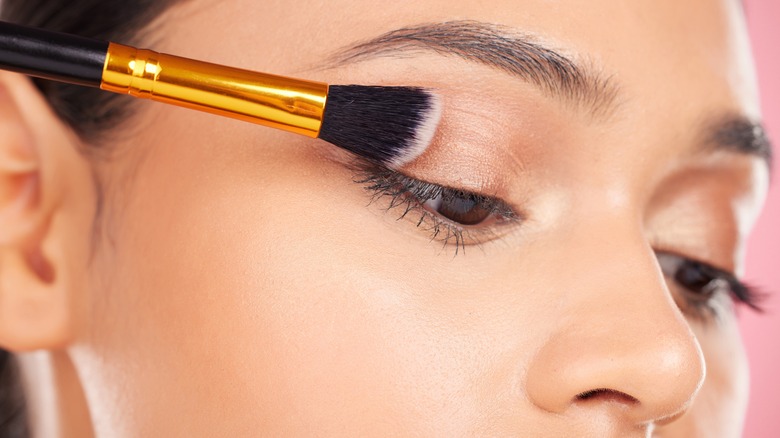How Does A Clear Eyeshadow Base Differ From A White One?
There is so much that could go wrong when you're applying eyeshadow. For one, your shadows could shift, smudge, or fall onto your under eyes and cheeks. But even more frustratingly, your colors might not even show up on your skin at all. To solve the problem of poor color payoff with their shadows, makeup lovers use a makeup item known as an eyeshadow base. Once you know what base shades to use, your entire eye makeup routine will change for the better.
Like your typical primer, eyeshadow base is a creamy-textured product that you apply to your eyelids. However, unlike eyeshadow primer, which improves how long your shadows last on your eyelids, an eyeshadow base is formulated to improve how intense your colors appear on your lids. To enhance the vibrance and intensity of your shadows while giving you space to experiment, eyeshadow bases are available in several options, including white and clear. But if both bases improve color payoff, what is the difference, and which shadows work best with them?
The base impacts the color trueness and intensity
While any eyeshadow base will improve color payoff, the difference between a clear base and a white base lies in the intensity of color you get. In a tutorial reel on Instagram, beauty content creator and educator Rose Siard (@roseandben) explained how eyeshadow bases work and what sets them apart. As she demonstrated in the video, both bases improved the intensity of her shadows compared to when she applied them on her bare skin. However, where the clear base created a subtler effect in the vibrance of the colors, the shadows on the white base were visibly more intense.
The colors on the white base were also much more faithful to their versions on the eyeshadow palette than those on the see-through base, which had a bit of her skin tone peeking through. This is mainly because, like a white painting canvas, a white base creates a blank space for you to work with without interference from your skin tone, hyperpigmented areas, or the colors themselves. This is also why the colors appear more accurately than with a clear base. But that's not to say the clear base isn't a more suitable choice in some situations.
The best base comes down to colors and undertones
While a clear eyeshadow base will improve color payoff, the results are less intense than those of a white eyeshadow base. This difference also ties into undertones, which Siard explained are a significant perk when using a clear base. The white base conceals and creates a blank canvas for you to work with, making your colors show up as they look on the pan. This quality makes it a great choice when working with neon pigments and pastels, as they contain a lot of white and can easily change colors on your skin when applied directly.
The clear base, however, intensifies color while reflecting your skin undertones on the shadows. For example, if you have a warm undertone and you're trying to get your shadows to have that quality, too, using a clear base will make your colors more vibrant and create a general cohesiveness in the undertone of your skin and your shadows. This property makes it suitable for any shades, including metallics and pastels.
The key to getting the most out of your white or clear base
Now that you know the differences between clear and white eyeshadow bases, you need to know how to apply them. Eyeshadow bases improve how well your colors pay off on your skin. But they do not improve how long your shadows last without smudging or falling out – that's what eye primer does. Since primer and base do two different things, it begs the question of which one you should start with.
It's best to start with the primer. Eye primer provides a smooth yet tacky surface for not just your shadows but also your base. As such, applying your primer and following it up with a small amount of your base will give your shadows longevity and vibrance. After applying your base, get creative with your shadows, whether it's some pastels on your white base or foiling a pink shimmer with a clear base. And once you're done, finish the look with mascara, eyeliner, and false lashes.


